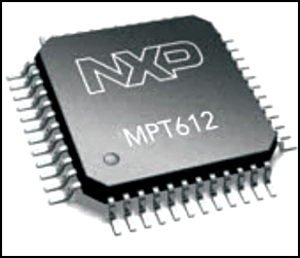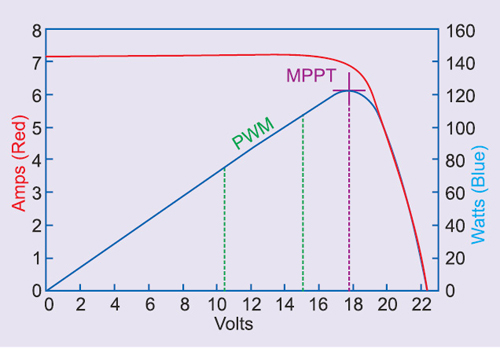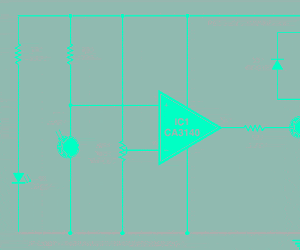Current Sweep. An MPPT system implementing the current sweep algorithm periodically measures all the possible current and voltage pairs for the solar panel. It then finds the voltage at which highest power is delivered and adjusts the load accordingly.
Implementation of MPPT in design

These days, there are many ICs available in the market to implement MPPT functionality in a single chip. They simplify MPPT design and usually have a large number of features. Systems built around such ICs are usually cheaper due to lower parts cost and count but cannot be customised to specific conditions or needs.
Some ICs, such as BQ24650 by Texas Instruments and LT8490 by Linear Technologies, are fully integrated solutions with battery-charging capabilities, MPPT and switch mode voltage conversion in a single package. This drastically reduces parts cost and count. Others like the MPT612 from NXP Semiconductor (Fig. 3) are extremely powerful dedicated MPPT ICs with high-frequency RISC cores. The MPT612, in particular, uses a proprietary algorithm for implementation of MPPT and can be tailored to a particular application as it has memory for application software.
An MPPT system can also be built around microcontrollers like the PIC and AVR families that offer flexibility and a high degree of customisation. The firmware of such systems can be upgraded from time to time, allowing performance gains in existing systems. Higher-performance ARM microcontrollers can be used for systems requiring higher efficiencies and faster adjustment to changing conditions, but they are more complex and are often costlier. It is important to note, however, that MPPT systems built around microcontrollers require more external peripherals which are built in dedicated ICs and are hence costlier.
Comparison of solar charging technologies

Currently, most solar charging systems are based on pulse width modulation (PWM) technology. Such charging systems charge the battery with varying amounts of current at various battery voltage intervals for higher battery life. The current is varied by connecting and disconnecting the solar panel to the battery very quickly for a fixed ratio of time, that is, by varying duty cycle of the power to the battery.
Conclusion
Solar power holds the key for India to end energy shortages and be self-sufficient in its energy demands. By increasing power output tremendously, MPPT is a technology that has the potential to fulfil this dream by making solar power cheaper and accessible to all.
The author is a student of class XII and has been building circuits since he was 12 years old. His interests include embedded electronic design, building robots and wireless communication. He is currently working on projects with the Raspberry Pi






